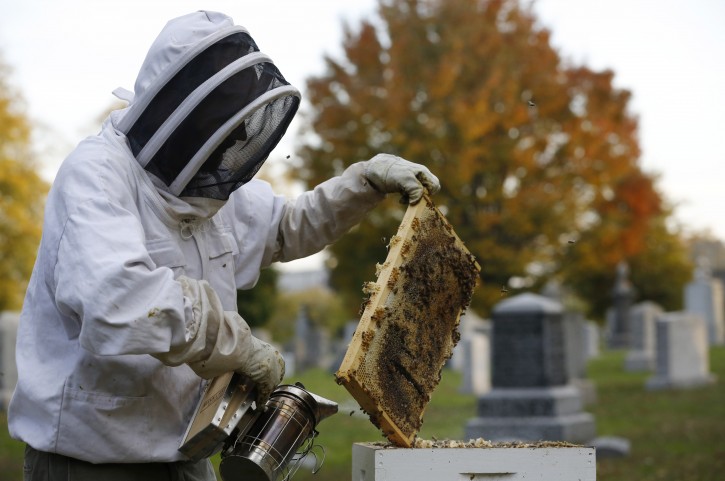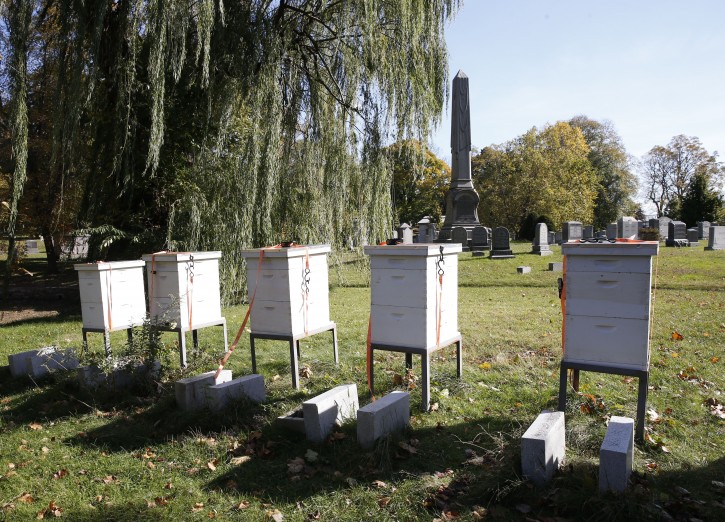 New York – The silent graves and mausoleums of Brooklyn’s Green-Wood cemetery are the final resting place of luminaries who created a buzz when they were alive, like composer Leonard Bernstein, newspaperman Horace Greeley and maverick artist Jean-Michel Basquiat.
New York – The silent graves and mausoleums of Brooklyn’s Green-Wood cemetery are the final resting place of luminaries who created a buzz when they were alive, like composer Leonard Bernstein, newspaperman Horace Greeley and maverick artist Jean-Michel Basquiat.
Subscribe to our Daily Roundup Email
It’s also home to some 600,000 honeybees and a beekeeping operation that churns out honey sold under the brand name “The Sweet Hereafter.”
Brooklyn beekeeper Davin Larson, 30, who worked with bees as a youngster growing up in the Midwest, got the idea for the hives while listening to a classical music concert at Green-Wood’s central chapel two years ago.
“I was sitting there when I thought, “This has to be a perfect place to keep bees in the city,'” he said.
Founded in 1839, Green-Wood sprawls over 478 acres of rolling hills, winding roads and pretty paths and ponds, making it one of the larger green areas in the city.
Larson proposed the idea to cemetery volunteer Nicole Francis, herself a backyard beekeeper. She sold the concept to the cemetery’s public programming director.
Today, the bees help pollinate the cemetery’s tons of flowering plants and trees, said John Connolly, Green-Wood’s General Manager Public Engagement and Involvement.
To help defray the high cost of maintaining the hives, supporters of the program are encouraged to shell out $500 to sponsor a hive, or $250 for half a hive.
Green-Wood’s beekeepers harvested 200 pounds of honey this year, sold from a wheeled cart outside the cemetery’s gothic main gate.

Larson manages six of Green-Wood’s 15 hives.
In the spring, the bees feed on sugar water, which encourages them to build honeycombs. Then, depending on the weather, they produce honey from April through June, Larson said. In the fall, the bees are fed a formula twice as sweet to ensure they have enough food through the winter.
“We probably bought 400 pounds of sugar this year,” Larson said.
Green-Wood contains the remains of 560,000 people, including decorative arts designer Louis Comfort Tiffany, Brooklyn Dodgers owner Charles Ebbetts, box-score inventor Henry Chadwick and “Wizard of Oz” actor Frank Morgan (who played the Wizard and other characters).
“I was concerned people whose have relatives buried in Green-Wood would object, but they’ve been nothing but supportive,” Larson said.



A wonderful idea.